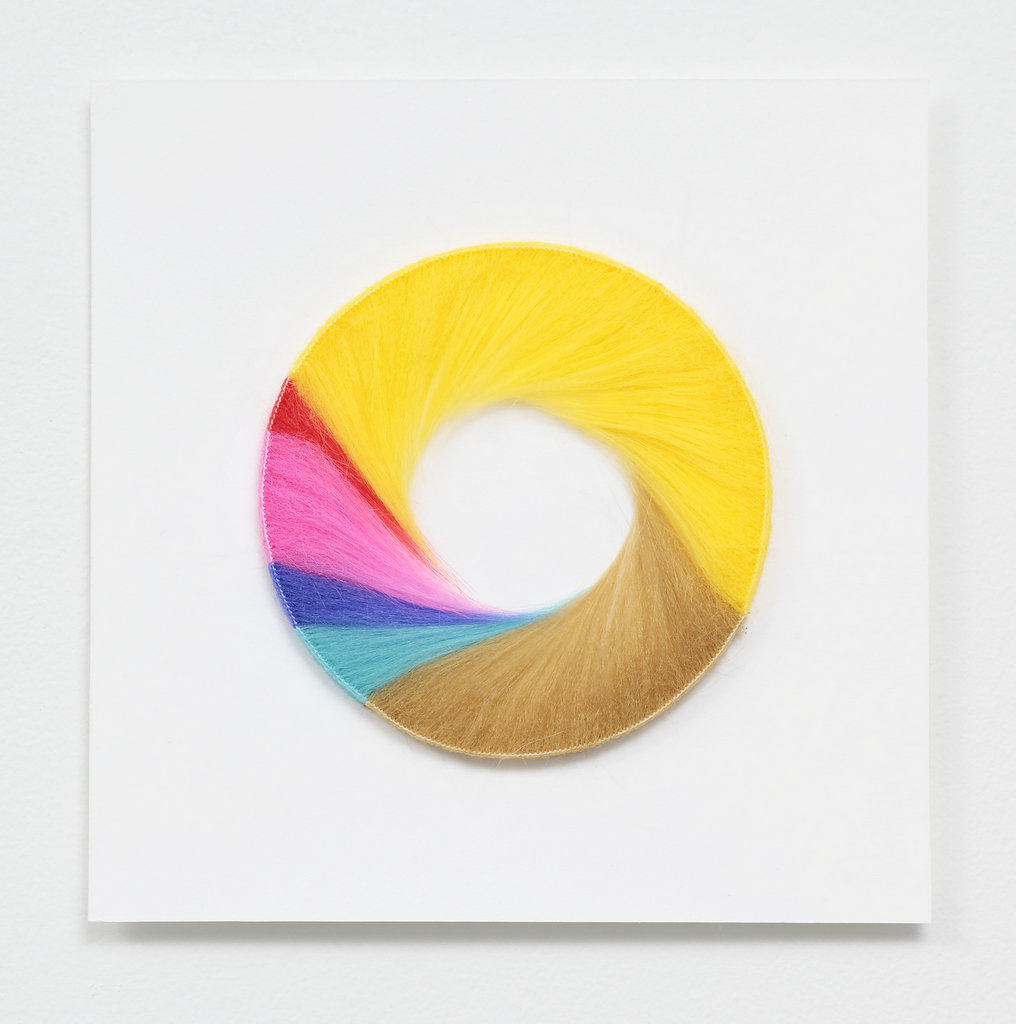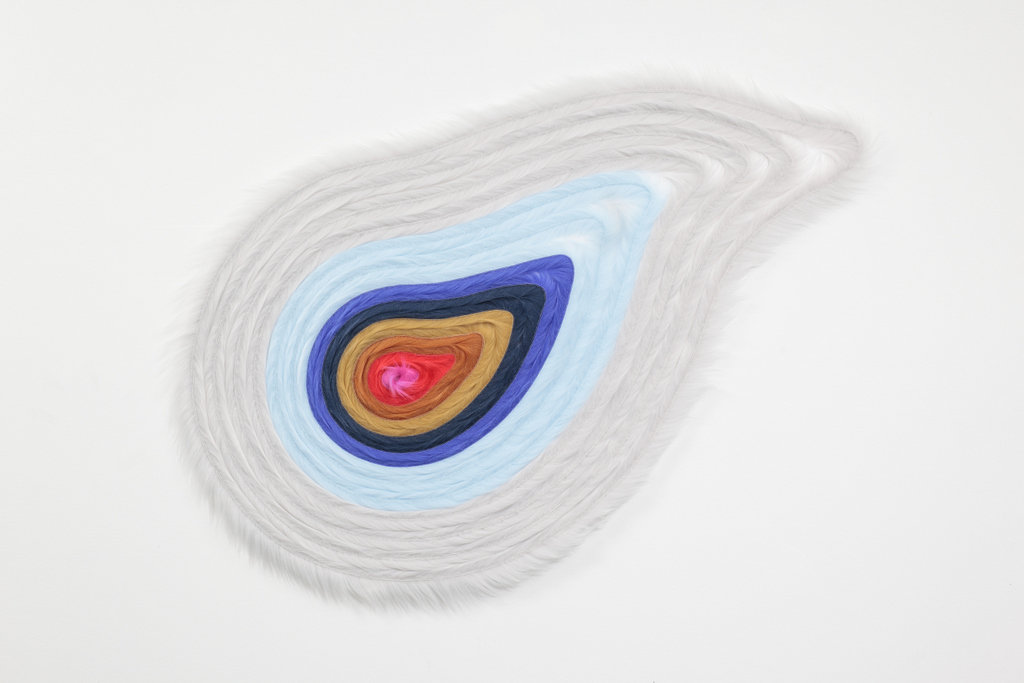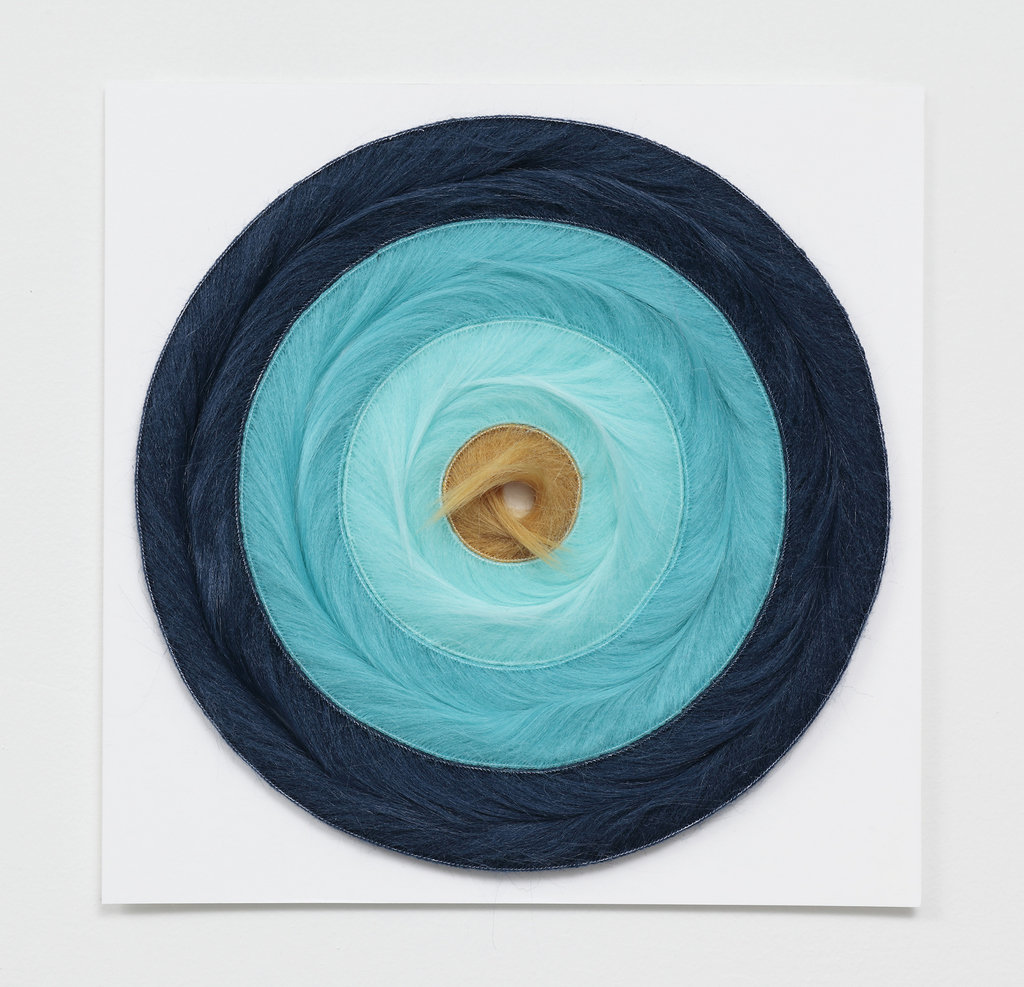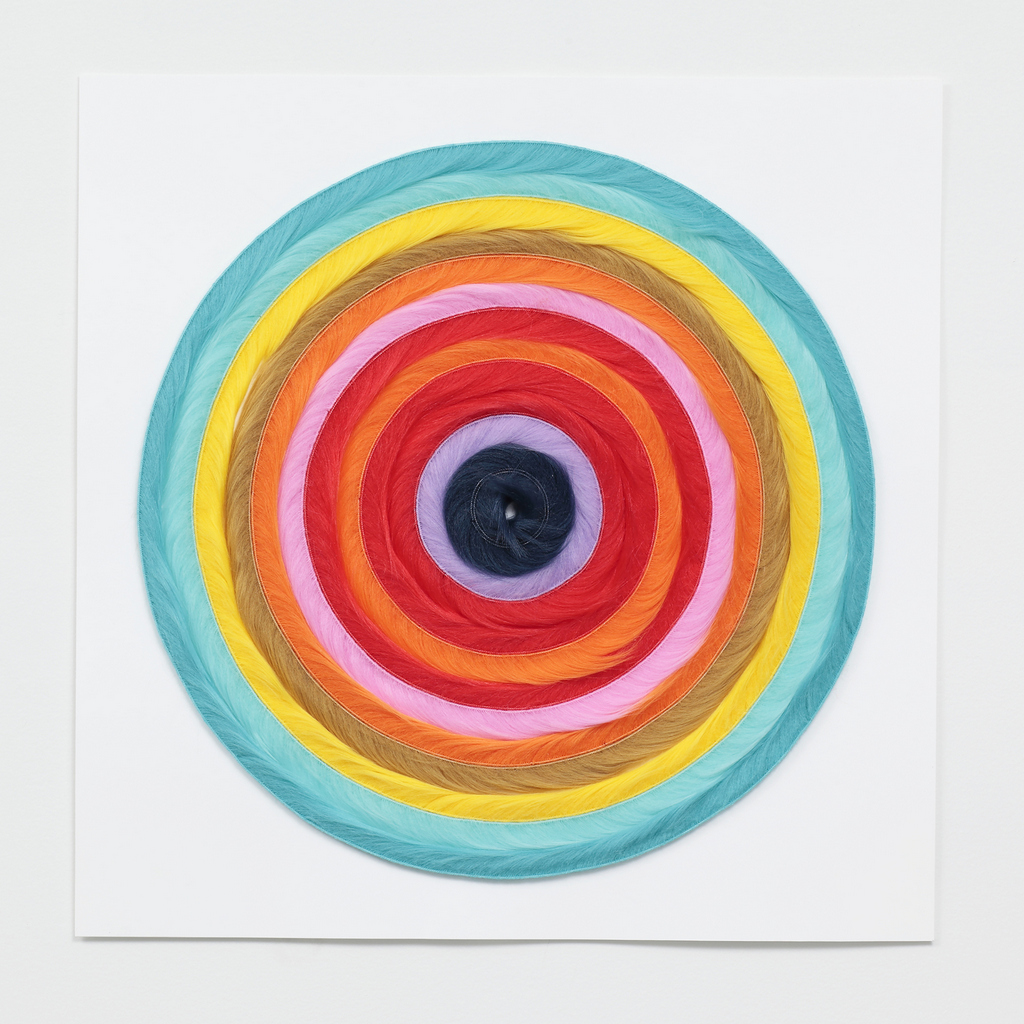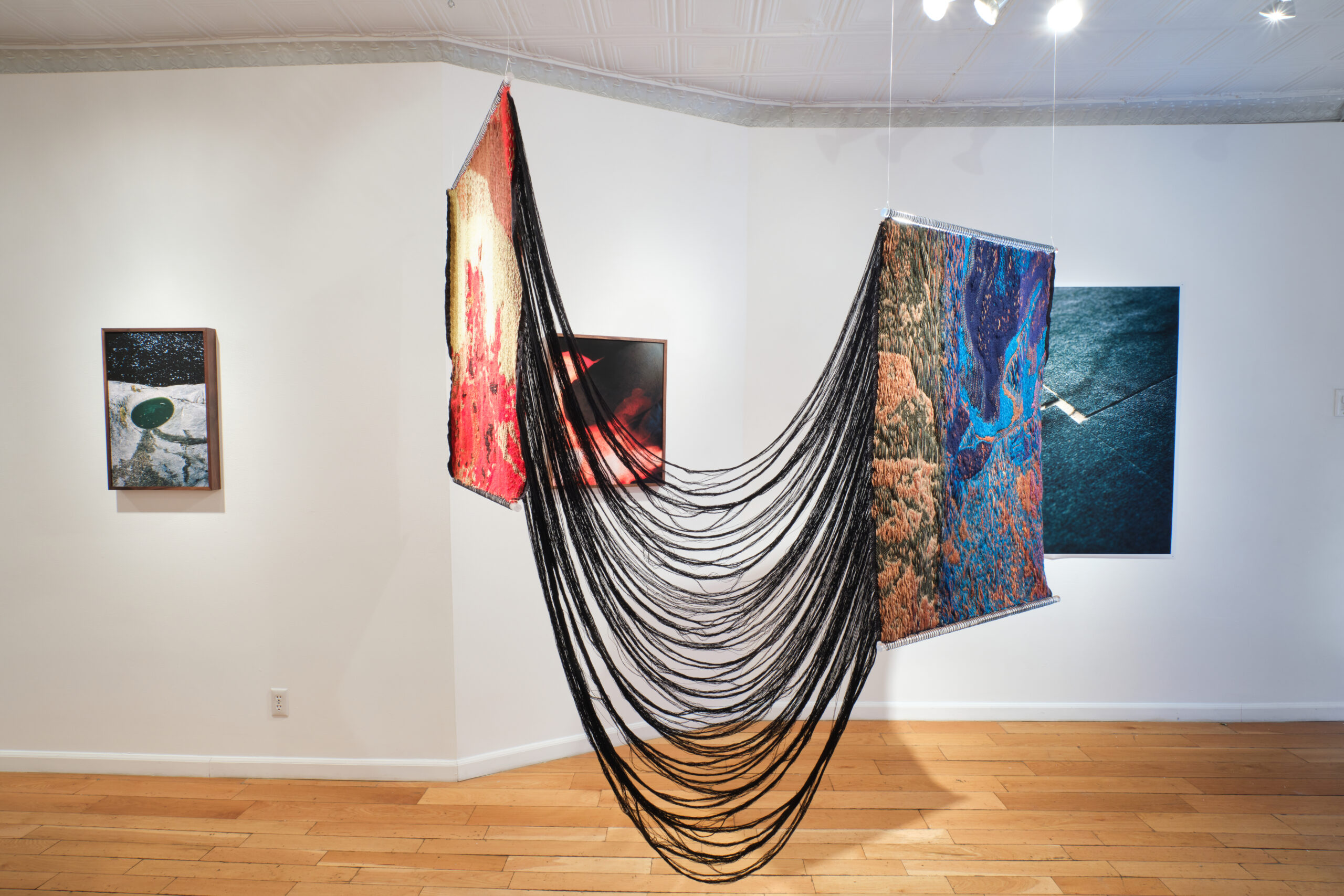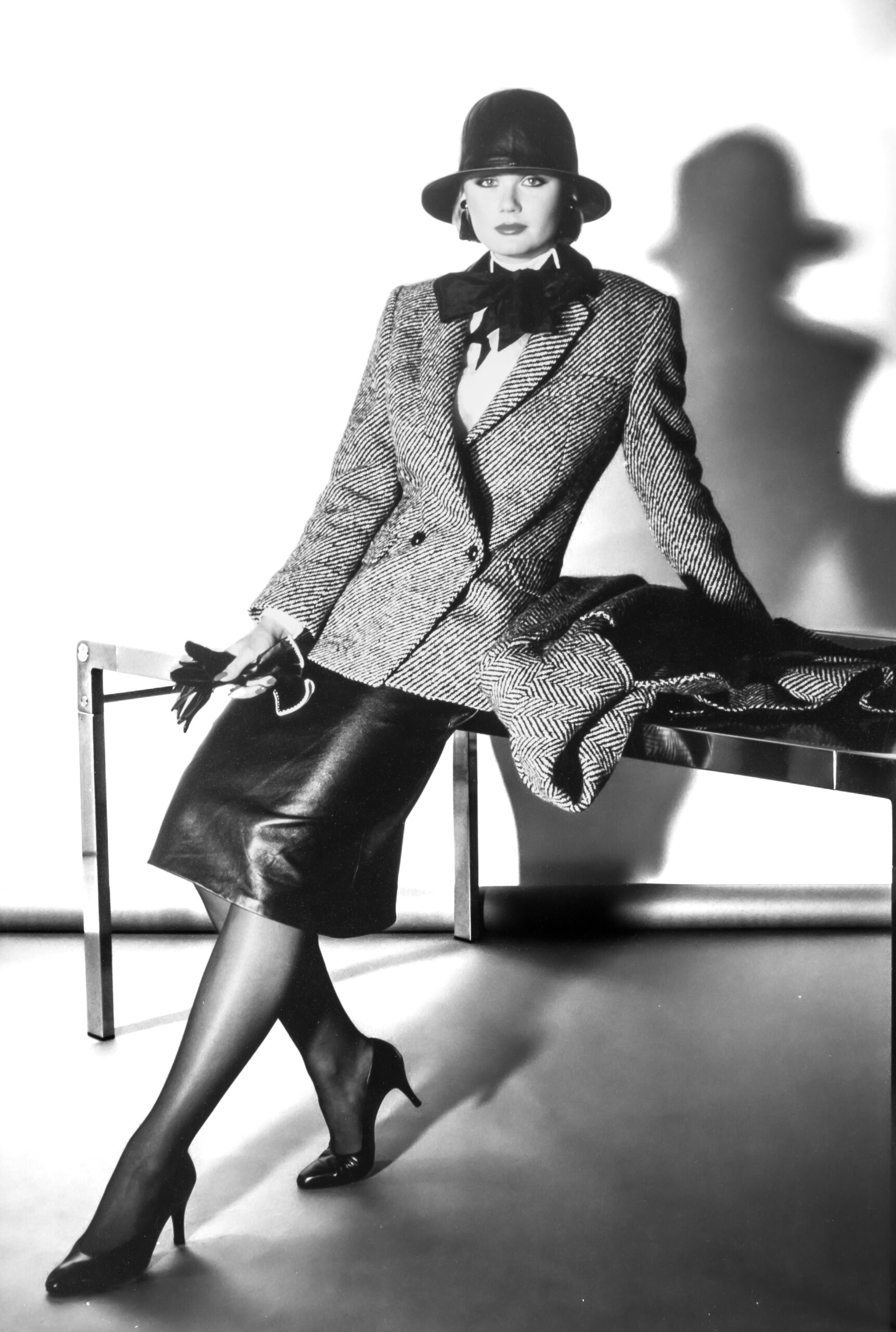Meg Roberts Arsenovic processes Virginia history in colorful faux fur
The American artist Meg Roberts Arsenovic (1987) often uses seductive textures in a clear and naive use of color in her work. At the basis of her work is her research into the colonial and geographical history of the state of Virginia. More specifically: the Tidewater region around West Point, at the Atlantic coast. Before the arrival of Europeans, her somewhat dull hometown proved to be nothing less than the cultural epicenter of indigenous people. And more surprises awaited her.
Text: Wouter de Vries
Meg's interest in the history of Virginia was sparked during a residency at Haystack Mountain School of Crafts, in the state of Maine. There she met Hitoko Okada, an artist and storyteller. "She asked me to tell something about the history of Virginia," says Meg. “I realized that I did not go further than repeating the bullet points that I received as a child in grade four from primary school. I then became aware of my own superficial knowledge. In my work I play with the contrast between the childlike and naive understanding that has been imparted to me at school, and a more daring truthful concept.”
"What I have learned is how little I know about the history of my region, and how much more there is left to know."
Uncomfortable truths
To find out more about the history of Virginia, Meg went to the places she had visited as a child during school trips and learned about it. Moreover, she devoured "hundreds of kilos" of library books and talked to a historian. One of the uncomfortable truths that Meg learned during her research was the fact that the rural environment in which she grew up before the arrival of Europeans was a cultural epicenter known as Werowocomoco, the capital of a powerful and thriving nation of indigenous tribes known as the Powhatan Confederacy. “I always considered West Point the opposite of a cultural epicenter. What a wealth to know that centuries ago it was different."
Virginia
This year, in 2019, Virginia commemorates the 400th anniversary of events that led to the foundation of the current United States. "Representative democracy was introduced in Virginia," says Meg. “And a few weeks later the first enslaved Africans were brought to a point of land called ‘Point Comfort’ to be transported to Jamestown, near West Point. That was the start of a horrible legacy, the traces of which are still visible today. ”Another uncomfortable truth.
Marine target
In her "Marine target" series, Meg has processed het realization that just beneath the Tidewater Region there is a massive buried crater, the Chesapeake Bay Impact Crater. The impact that caused this crater devastated much of Virginia and sent tidal waves back to Europe and Africa. Never known as a child. This “impact event” and the massive buried crater has become a central metaphor in her work. What other secrets does her region hold? Meg constantly processes new information in her art. Her message? Look closer, at your own surroundings, and be open to learning, even if it is uncomfortable.
Pocahontas
If you look at Meg's colorful work, you don't immediately think of colonialism, slavery or extermination of indigenous peoples. Yet there is a link, because Meg uses colors from indelible scenes in the Disney movie Pocahontas. This film was her first introduction to Virginia history. The animated film is set in her region of Virginia and is a heavily romanticized, error filled story based on the life of the Powhatan Indian princess Pocahontas and the English explorer John Smith.
Muppets
"But the Muppets are also a source of inspiration," Meg adds. “Do you know the only adult woman in that show? She is so mysterious and withholding. You never see more of her than her legs and colorful stockings.” With the naive use of color, Meg also makes a link with her own naive knowledge of her surroundings. In addition: “When you place the colors next to each other, they vibrate and pulsate. It's hard to watch. Your eyeballs bounce all over the place.”
Fake fur
Meg developed her method during the residency in Haystack. "Because Haystack is quite remote, I could only work with the materials that I had brought into the car." Meg first worked with entire panels of faux fur. When she found that she would not come out with the material, she cut the faux fur into narrow strips. For her work, Meg first makes drawings on paper, places them on a light table, and glues strips of faux fur on them. This is how she creates her seductive textures.
Inspiration
In addition to Do Ho Suh and her mentors Sonya Clark and Susie Ganch, Meg was inspired by Virginia born painter Cy Twombly, who makes abstract paintings in which he incorporates world history. Meg: "It is very reassuring to know that there has been someone who has followed a similar path that I am now on."
